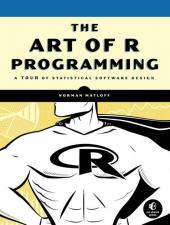Introduction
Chapter 1: Getting Started
Chapter 2: Vectors
Chapter 3: Matrices and Arrays
Chapter 4: Lists
Chapter 5: Data Frames
Chapter 6: Factors and Tables
Chapter 7: R Programming Structures
Chapter 8: Doing Math and Simulations in R
Chapter 9: Object-Oriented Programming
Chapter 10: Input/Output
Chapter 11: String Manipulation
Chapter 12: Graphics
Chapter 13: Debugging
Chapter 14: Performance Enhancement: Tradeoffs in Time and Space
Chapter 15: Interfacing R to Other Languages
Chapter 16: Parallel R
Appendix A: Installing R
Appendix B: Installing and Using Packages
View the detailed Table of Contents
View the Index

